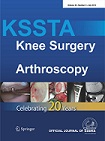
Arthroplasty
Lower incidence of outliers, but similar clinical outcome with navigated vs. conventional TKA
Knee Surg Sports Traumatol Arthrosc. 2016 Nov;24(11):3381-338680 patients scheduled for total knee arthroplasty were randomized to the surgery with the use of either imageless navigation or conventional extra- and intramedullary instrumentation. The purpose of this study was to compare radiographic and clinical outcomes over a minimum of 9-year follow-up. Data demonstrated a significantly lower incidence of mechanical axis outliers (varus or valgus deviation exceeding 3 degrees from neutral) with imageless navigation compared to conventional instrumentation, though no significant differences in clinical outcome measures or range of motion were observed between groups after a minimum of 9 years.
Unlock the full article
Get unlimited access to OrthoEvidence with a free trial
Start TrialCritical appraisals of the latest, high-impact randomized controlled trials and systematic reviews in orthopaedics
Access to OrthoEvidence podcast content, including collaborations with the Journal of Bone and Joint Surgery, interviews with internationally recognized surgeons, and roundtable discussions on orthopaedic news and topics
Subscription to The Pulse, a twice-weekly evidence-based newsletter designed to help you make better clinical decisions
Exclusive access to original content articles, including in-house systematic reviews, and articles on health research methods and hot orthopaedic topics
Or continue reading this full article
Register Now

Subscribe to "The Pulse"
Evidence-Based Orthopaedics direct to your inbox.




































